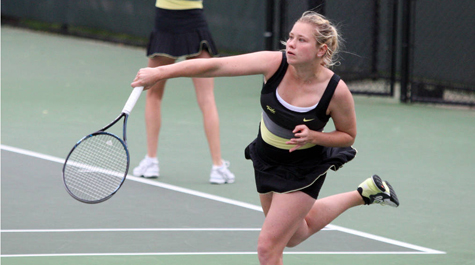Tennis team: Game ... set ... (well) matched
"Individual commitment to a group effort -- that is what makes a team work, a company work, a society work, a civilization work." --Vince Lombardi, Hall of Fame football coach
If sports are a microcosm of life, then an argument just might be made that tennis today is a microcosm of globalization in the modern world.
The International Lawn Tennis Federation (ILTF) was founded in Paris in March 1913, with 15 inaugural members: Australasia (Australia and New Zealand), Austria, Belgium, Denmark, France, Germany, Great Britain, Hungary, Italy, Netherlands, Russia, South Africa, Spain, Sweden and Switzerland. French (with English translation) was the official language.
In 2013, the ITF (“lawn” was dropped in 1977) celebrated its centennial with 210 member nations – from Afghanistan to Zimbabwe – and its 2014 and 2015 general meetings scheduled in Dubai and Santiago, Chile, respectively.
If you want some local proof of the international nature of tennis, you needn’t look further than the 2014-15 women’s tennis team at William & Mary.
At 10-2, the team boasts its best record in years, with no sign of slowing down. Remarkable not only for its top-notch play is that of the eight players on the team, all but two are international students.
Julia Casselbury ’16 hails from Lititz, Pennsylvania, and Olivia Thaler ’18 from Miami but their teammates come from across the globe: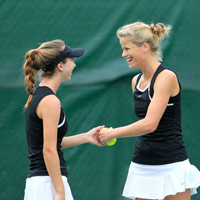
* Maria Groener ’18, Oslo, Norway
* Jackie Lee ’16, Brisbane, Australia
* Jeltje Loomans ’15, Houten, The Netherlands
* Leeza Nemchinov ’16, Moscow, Russia
* Mélanie Roy ’17, Villers Marmery, France
* Cecily Wuenscher ’18, London , England
Andre Agassi described tennis as the loneliest sport: “In tennis you're on an island. Of all the games men and women play, tennis is the closest to solitary confinement.”
That was no doubt true for him, but William & Mary’s women’s tennis team is, if not the exception to that rule, a shining example of teamwork and cooperation – both in spite of and because of its diversity.
Wuenscher doesn’t mince words: “There’s just a good vibe here. You have 100 percent confidence that we’re all going to fight ‘til the end. We don’t all need to win, but we will all do as well as we can.”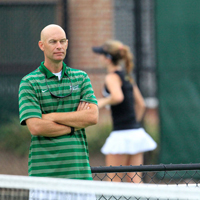
Loomans is quick to credit everyone on the team, especially the freshmen. “They bring a lot of hard work to the team,” she said.
For a clue into the success of the team, look no further than Head Coach Tyler Thomson and Associate Head Coach Jesse Medvene-Collins.
So how did the team end up being so international in character?
It turns out there’s no shortage of interest in coming to William & Mary, and the competition is fierce. Between Thomson’s reputation for success and the university’s reputation for excellence, he gets “at least 20 emails a day” from abroad trying to interest him in recruiting a player.
“Many of these young players have agents promoting them,” he added.
But that doesn’t seem to faze Thomson, who in his calm, measured way, simply states: “My goal in recruitment is to find the best players that fit the William & Mary profile.”
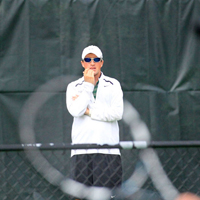 For him, that means, “strongly competitive, intellectual and most important, they must be eager to explore their potential,” he said. “And of course, in the case of international students, they must have high-level English conversational skills.”
For him, that means, “strongly competitive, intellectual and most important, they must be eager to explore their potential,” he said. “And of course, in the case of international students, they must have high-level English conversational skills.”
He uses the recruitment process to learn as much as he can about the players, traveling abroad if necessary to meet the young women and their families.
If you have any doubt he’s putting sentiment and personality above talent, he’s quick to add: “These players are among the very best in their countries and are here on full scholarships.”
By reaching beyond U.S. borders, Thomson builds the strongest team possible, and both U.S. and international students reap the benefits.
For Groener, the appeal was that the pool of opponents for her at home was so small.
“Our team in Norway would play a Swedish club and the ITF in Europe,” she said, “but especially when you’re top-ranked, you’re playing against the same people again and again.”
While American players can find more than enough competition from other Americans, if you’re a top-notch European player, by the time you’ve reached the equivalent of college level, you’ll have had by necessity considerable experience playing against opponents from other countries. That’s probably the reason the idea of a multicultural team doesn’t seem at all exceptional.
Another reason international students come to the U.S. is that in some countries, it’s not always possible to combine a focus on serious athletics with going to college. The William & Mary concept of the scholar-athlete is not an option in their countries.
As Cecily points out, “You have to decide which direction you want to take.”
Loomans acknowledges that there are different names and definitions for things in the U.S. In Europe, teams are managed by “trainers,” whereas in the U.S. they’re called coaches. The distinction is more than one of word choice, and the young women show their enthusiasm not only for the expertise they gain from Thomson and Medvene-Collins, but also for the mentoring and support that is part of the coaching process.
In their conversation as in their playing, these young women are focused, intelligent and yet quick to share the floor and hear what others have to say. There’s a lot of laughter and good-natured teasing.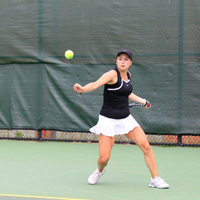
But perhaps not surprising, it’s Thomson who quietly interjects that it would be more interesting to ask Thaler, one of the two American players, what it’s like to play on such a cosmopolitan team.
The freshman admits that not only had she never been abroad, but she’d never left Florida before coming to William & Mary. For her, it’s a great opportunity above and beyond the tennis playing.
“I have lots of new friends in wonderful places I can visit,” she said.
For this native of sunny Florida, her biggest challenge on the team hasn’t had to do with language or culture, but climate.
“Before William & Mary,” she said, “I’d never played indoors -- or without my hat.”















